Abstract
Three adult human subjects engaged in activities such as reading, sewing, artwork, and candlemaking while living alone in a laboratory apartment 24 hours per day for several weeks. After a baseline period in which the activities were fully available, access to a particular activity (contingent response) was made dependent on engaging in another less-preferred activity (instrumental response). The contingencies produced substantial increases in instrumental responding, and responding decreased toward baseline levels when the dependency was removed. Under the contingent conditions, time earned for the concurrent activity was always less than the baseline level. To determine the contribution of this reduction to the instrumental increase, access to the contingent activity was restricted in the absence of any dependency. The results indicated that increases among responses that filled the newly available time could be selective, e.g., artwork increased when reading was restricted but candlemaking did not. It was concluded that the reductions in the contingent response that accompany contingencies usually do not exclusively determine instrumental increases, but selective increases can contribute to the increase in time devoted to the instrumental response.
Keywords: reinforcement, substitution, contingency, restriction, multiple-response, humans
Full text
PDF
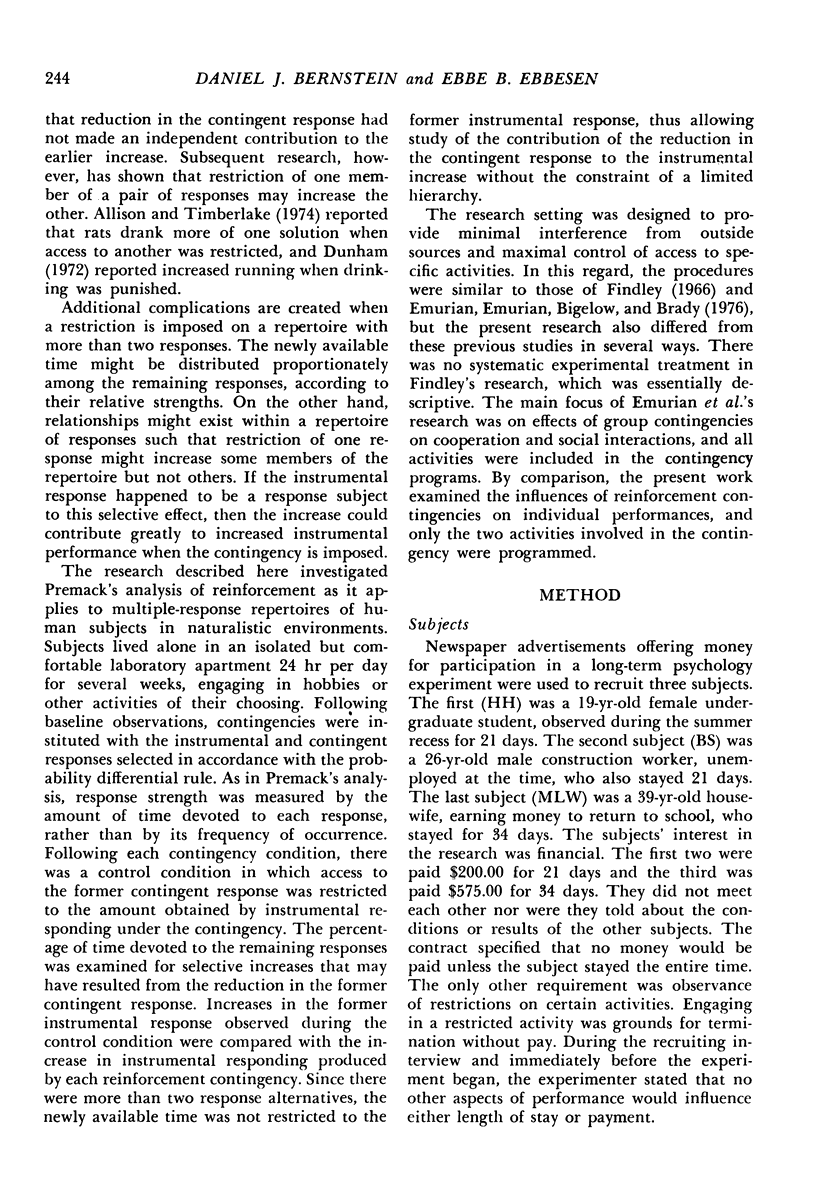

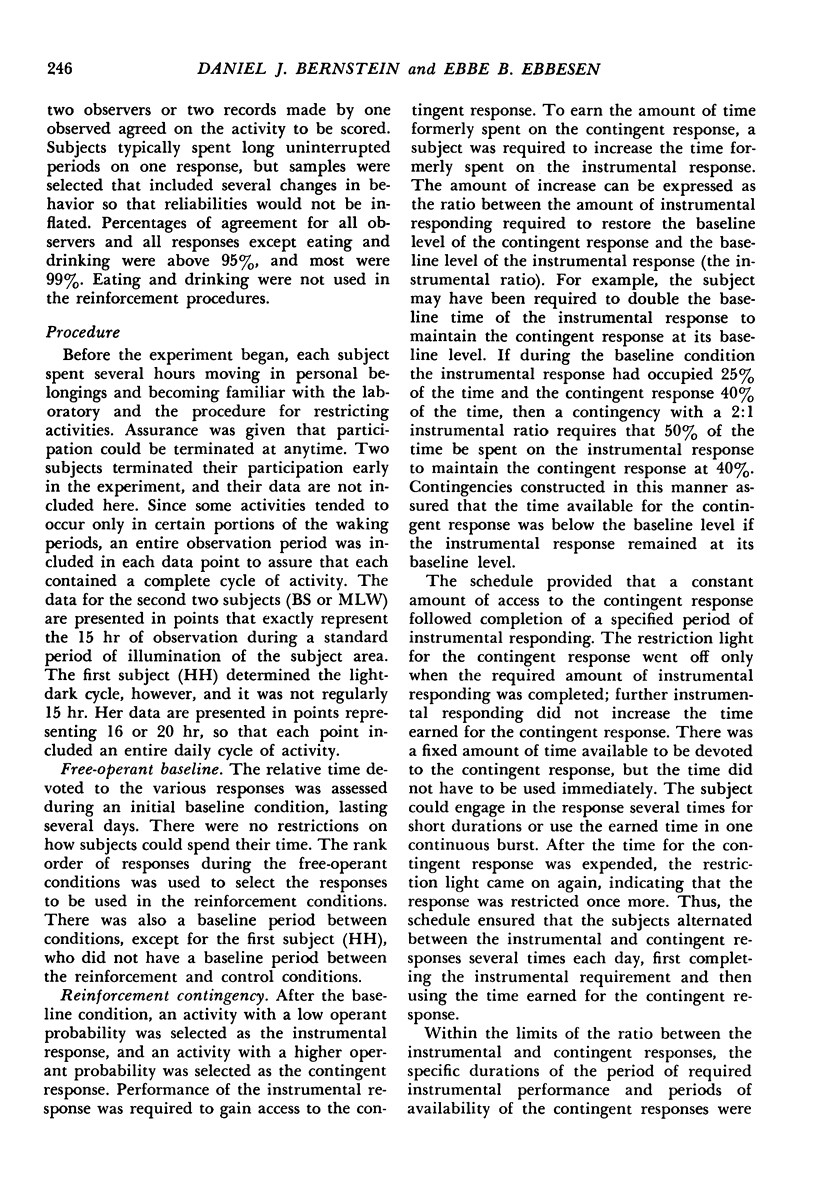
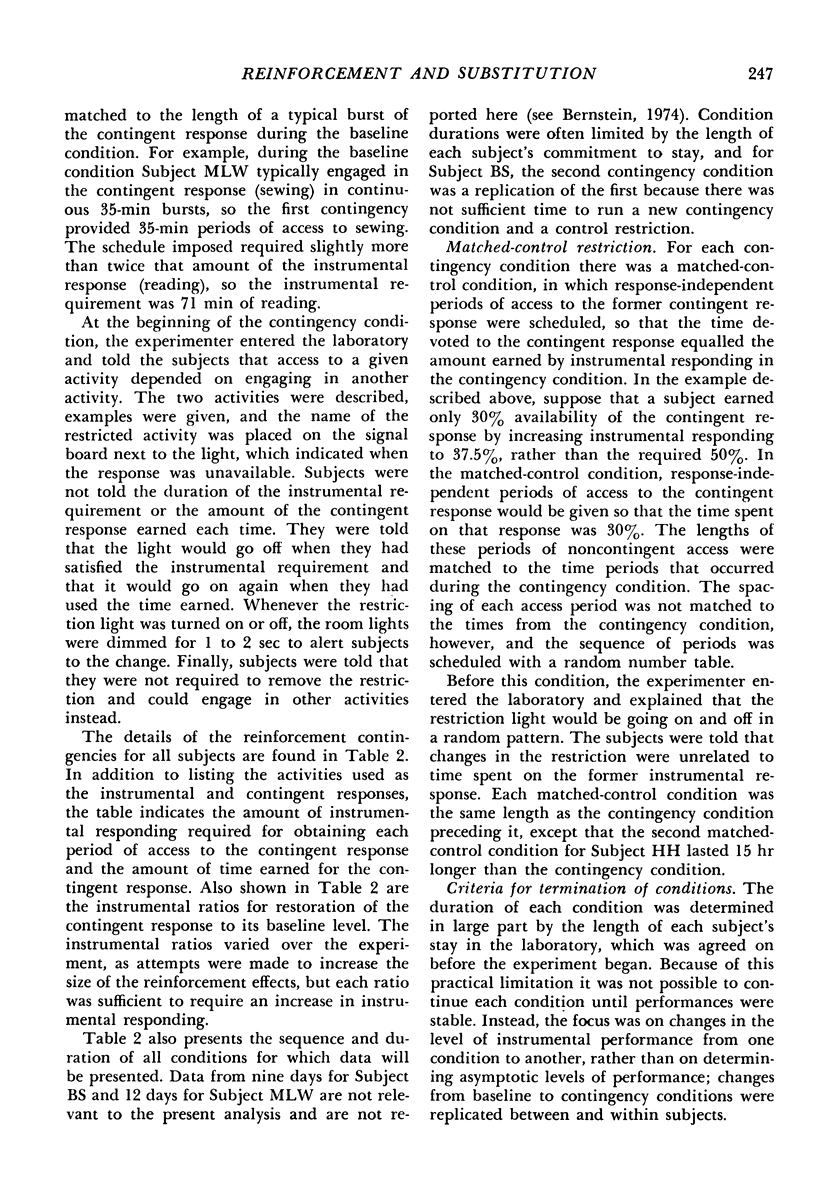
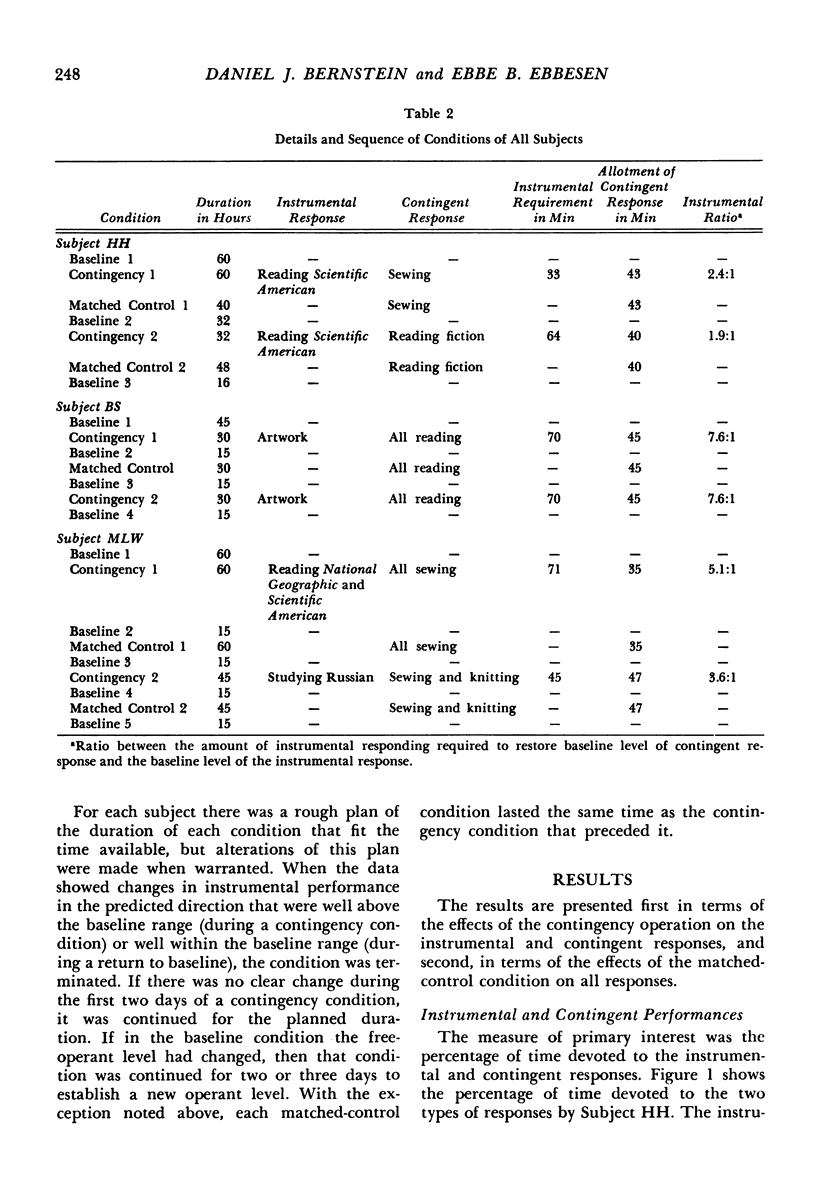

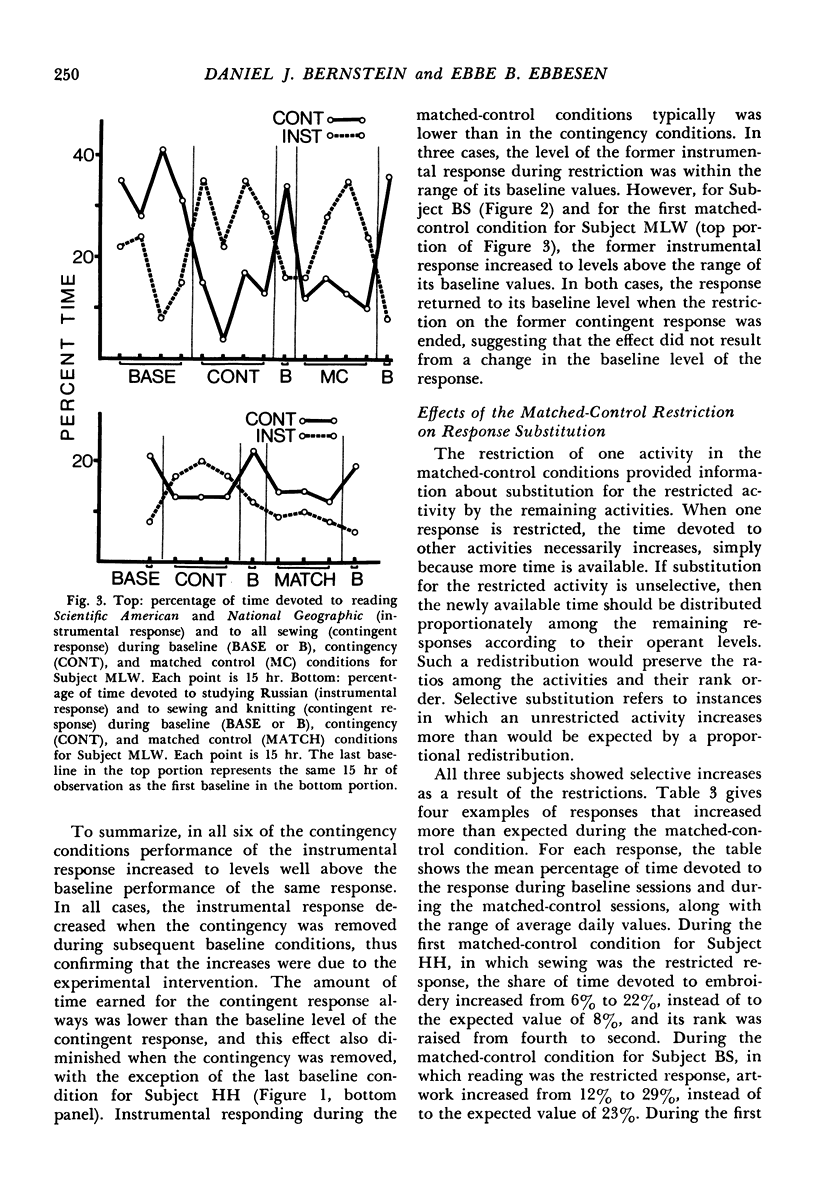
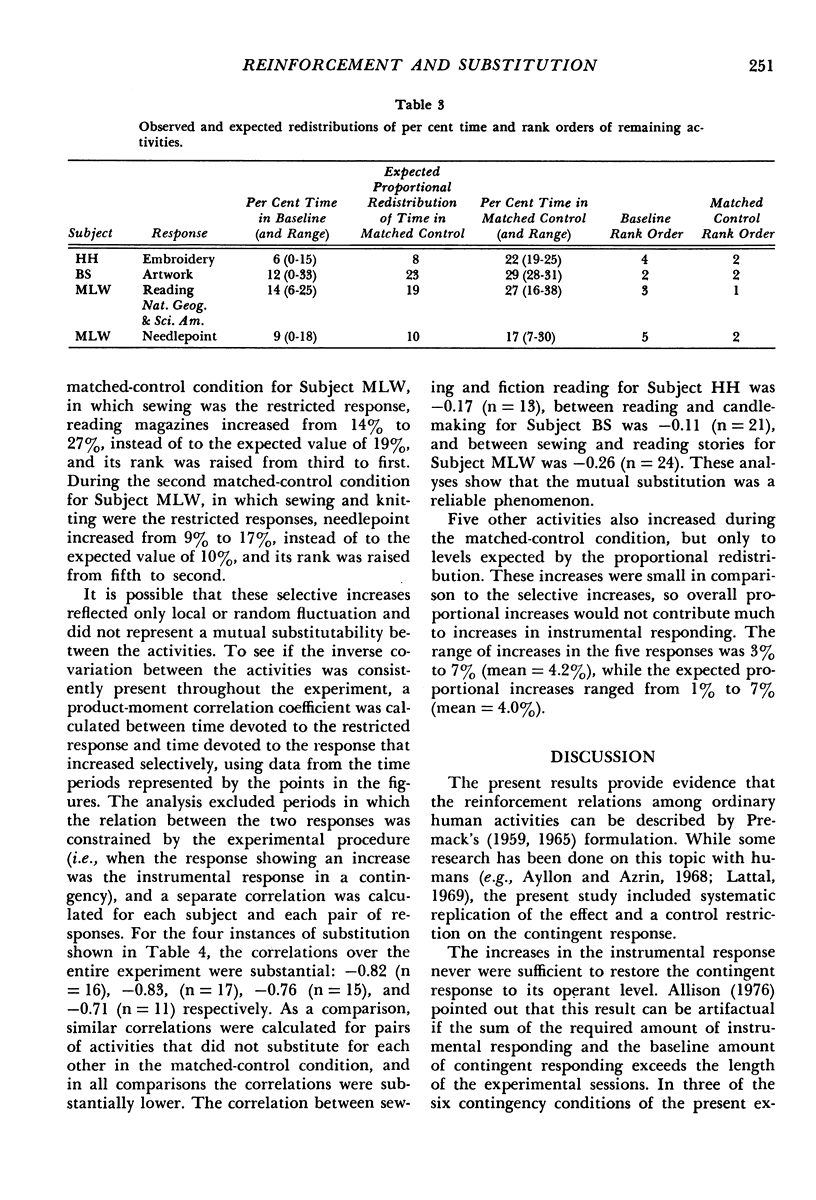
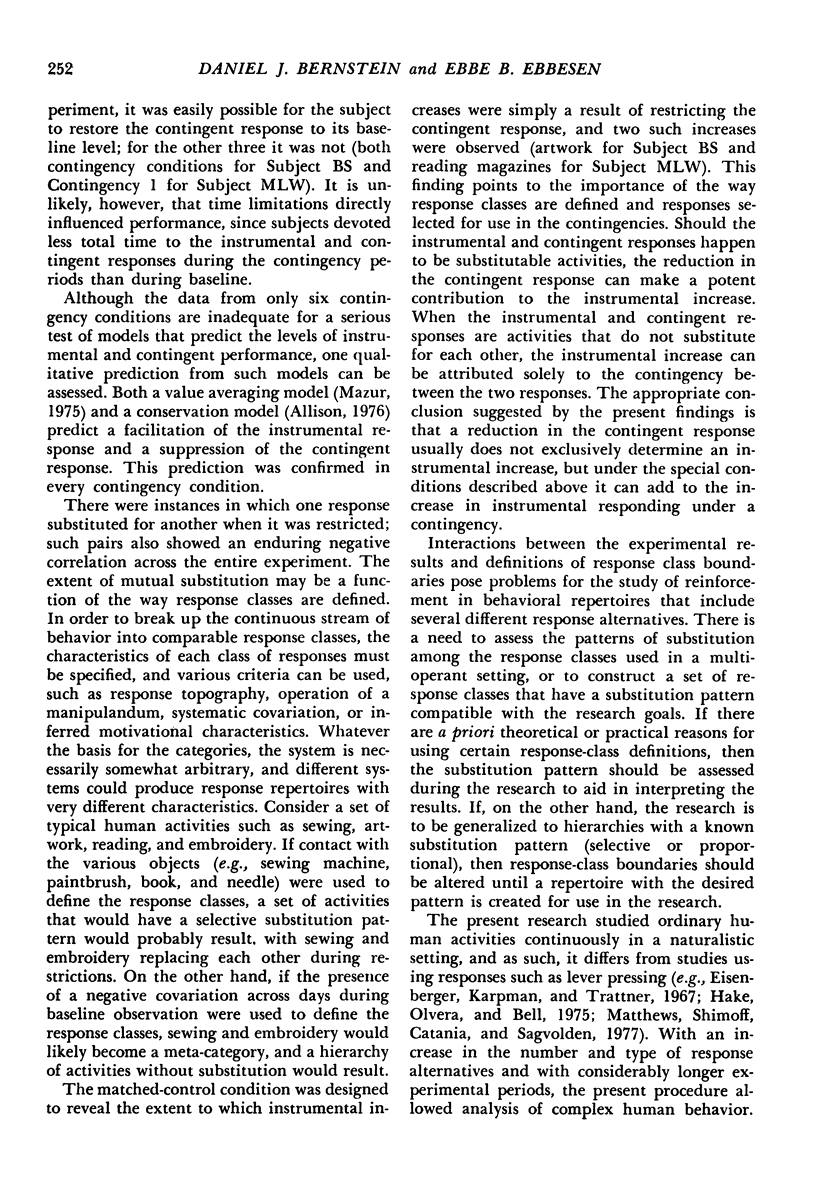

Selected References
These references are in PubMed. This may not be the complete list of references from this article.
- Allison J. Contrast, induction, facilitation, suppression, and conservation. J Exp Anal Behav. 1976 Mar;25(2):185–198. doi: 10.1901/jeab.1976.25-185. [DOI] [PMC free article] [PubMed] [Google Scholar]
- Dunham P. J. Some effects of punishment upon unpunished responding. J Exp Anal Behav. 1972 May;17(3):443–450. doi: 10.1901/jeab.1972.17-443. [DOI] [PMC free article] [PubMed] [Google Scholar]
- Eisenberger R., Karpman M., Trattner J. What is the necessary and sufficient condition for reinforcement in the contingency situation? J Exp Psychol. 1967 Jul;74(3):342–350. doi: 10.1037/h0024719. [DOI] [PubMed] [Google Scholar]
- Emurian H. H., Emurian C. S., Bigelow G. E., Brady J. V. The effects of a cooperation contingency on behavior in a continuous three-person environment. J Exp Anal Behav. 1976 May;25(3):293–302. doi: 10.1901/jeab.1976.25-293. [DOI] [PMC free article] [PubMed] [Google Scholar]
- Hake D. F., Olvera D., Bell J. C. Switching from competition to sharing or cooperation at large response requirements: competition requires more responding. J Exp Anal Behav. 1975 Nov;24(3):343–354. doi: 10.1901/jeab.1975.24-343. [DOI] [PMC free article] [PubMed] [Google Scholar]
- Lattal K. A. Contingency management of toothbrushing behavior in a summer camp for children. J Appl Behav Anal. 1969 Fall;2(3):195–198. doi: 10.1901/jaba.1969.2-195. [DOI] [PMC free article] [PubMed] [Google Scholar]
- Matthews B. A., Shimoff E., Catania A. C., Sagvolden T. Uninstructed human responding: sensitivity to ratio and interval contingencies. J Exp Anal Behav. 1977 May;27(3):453–467. doi: 10.1901/jeab.1977.27-453. [DOI] [PMC free article] [PubMed] [Google Scholar]
- PREMACK D. Toward empirical behavior laws. I. positive reinforcement. Psychol Rev. 1959 Jul;66(4):219–233. doi: 10.1037/h0040891. [DOI] [PubMed] [Google Scholar]


